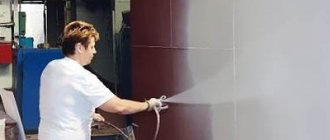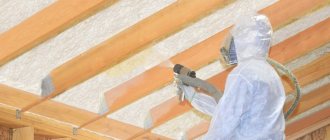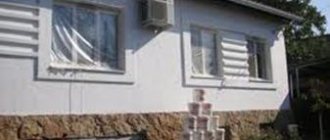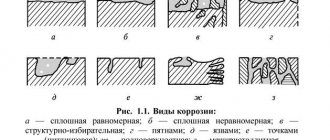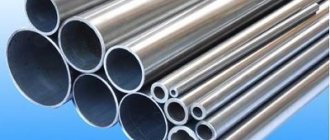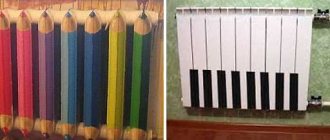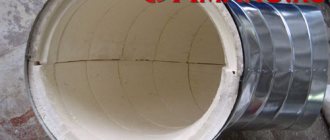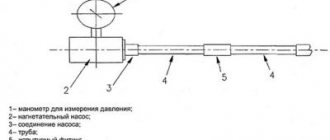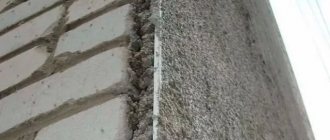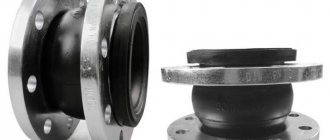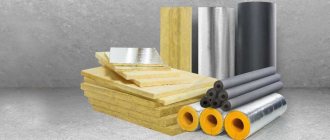Thermal insulating paints for pipelines are an innovative energy-saving material.
- What is heat insulating paint for pipelines
- Paint composition
- Scope of application
- Material advantages
- Features of application
Thermal insulating paints for pipelines are an innovative energy-saving material. This is a polymer-based composite that is used in construction instead of standard thermal insulation material. The main advantage of this paint is that it creates a thin layer coating with excellent thermal and waterproofing.
Rules for applying liquid thermal insulation
Wall insulation
For insulating walls using liquid materials, insulation with ceramic components is more suitable. Liquid ceramic insulation with a water base is ideal for internal wall coverings, and for external facades the option with a varnish base is suitable. With this material you can easily insulate hard-to-reach places and do the work yourself.
Before starting work, you should prepare the surface. To do this, you need to remove all irregularities and, if necessary, plaster using a dry gypsum mixture. Afterwards you need to apply a primer. When the wall is completely prepared, you should start mixing liquid insulation. It should be mixed immediately before application and follow the manufacturer's instructions. Thermal paint is applied in several layers; a new layer can be formed after the previous one has completely dried. Also, the paint layer should be about 1 mm thick. The number of layers depends on the material and thickness of the walls. You can apply the product with a foam roller or spray, then there will be an even coating.
To insulate the walls externally, you need to not only level the surface, but also get rid of mold and mildew, and then treat it with a special antiseptic. After this, the wall is primed. When the primer has dried, you can begin thermal insulation. The weather during work should be warm; in the presence of wind or rain, it is prohibited to apply thermal paint. The layer of applied paint should be no more than 1 mm. It is recommended to use a brush or spray. Each layer takes about 24 hours to dry. Complete drying of the finishing layer depends on the number of layers applied.
Insulation of floors
To reduce heat loss, it is possible to insulate floors using liquid thermal insulation; this option goes well with a heated floor system. But this method can be used in rooms where there is no floor heating.
Before starting work, you should clean off dust and dirt and remove all uneven surfaces. Then a primer in the form of acrylic impregnation is applied. After it has completely dried, you can apply thermal paint. It is best to use a spray bottle here. It should be kept at a distance of 50 cm from the floor, and should be worked at one angle. Then the paint will be evenly distributed over the entire floor area.
Pipe insulation
Liquid thermal insulation is used for insulation of pipelines in the gas and oil industries, as well as for water supply pipes. This coating reduces heat loss and also provides protection from chemical and mechanical stress. For this purpose, a special line of thermal paints designed for pipes is produced.
Before starting work, remove dirt and rust, then prime the pipe. After the primer has completely dried, you can begin the insulation process. Ceramic thermal paint is applied using a brush or a special sprayer. It is necessary to apply about 5 layers, each layer dries in about 4-5 hours. After this, the pipe is coated with special enamel.
Specifications
Corundum paint has technical characteristics that allow it to be used for structures with different purposes and configurations. Even if the layer is minimal, the product still remains a good insulator.
The following main characteristics of Corundum paint are distinguished:
- Thermal conductivity. The indicator is approximately 0.0012 W/(m*S). This parameter is noticeably lower than that of other materials that are used as thermal insulators (for example, this applies to mineral wool, foam plastic, etc.).
- Moisture resistance. The substance will not allow water to pass through. In addition, the layer is not destroyed by moisture. Even solutions with a high salt content will not have an effect.
- Vapor permeability. The paint does not form an airtight film, so it will not interfere with air exchange in the room. Thanks to this, an optimal microclimate is maintained inside.
- Fire resistance. The material is not subject to combustion. When the temperature rises to 800°C, the paint simply begins the process of decomposition. As a result, nitrogen and carbon oxides are released. If the temperature is 260°C, then the heat-insulating layer simply becomes charred. In terms of fire safety, such material belongs to categories G1 and B1, that is, it does not burn or ignite.
- Adhesive properties. The indicator may differ depending on the surface itself on which Corundum insulation is to be applied. For example, if a concrete layer is used, then the index is 1.28 MPa. For steel it is 1.2, and for brick – 2.
- Operating temperatures include a range from -60°C to 260°C.
- Resistance to ultraviolet radiation. The material will not deteriorate when exposed to direct sunlight. It can be used even without a special protective layer.
- Biological resistance, that is, the material is resistant to the action of fungi, mold, and bacteria. It won't rot. In addition, rodents and insects will not be able to eat such coating.
- Environmentally friendly. This ceramic type paint does not emit toxic substances, even if it is heated. In addition, when applying it, you do not need to use special personal protective equipment.
- Operating time. This coating is durable. It can last at least 10 years. During this time it will not collapse or become covered with cracks.
What is it made from, what technical characteristics does it have?
Liquid thermal insulation is an innovative material with very high thermal insulation performance. This is a composite coating made of polymers containing hollow ceramic microspheres.
Insulation composition
The structure of this substance is as follows:
- The base is a binder - a mixture of water and acrylic. Designed to promote uniform distribution over the surface and enhance the adhesive properties of surfaces.
- The filler is ceramic granules, microscopic in size, which are filled with gas. Thanks to their presence, thermal insulation increases significantly.
- Additional components - rubber, silicone and other components with properties that improve the water resistance and elasticity of the coating.
Insulating this insulation in combination with other types increases their ability to retain heat.
After application and complete polymerization, the specific gravity of the voids is scattered - 75-80%.
Molecular structure of liquid pipe insulation
Specifications
The indicators of this parameter are given in tabular form:
| Parameter | Description |
| Density (kg/l) | 0.6 (that is, a 10 liter bucket filled with paint will not weigh 10 kg, its actual weight is only 6 kg) |
| Color | Lactic |
| Presence of granules | Upon tactile contact (to the touch), a slight roughness is felt |
| Quality | When delamination occurs, a massive layer consisting of a layer of granules should be present. |
Coating under a microscope
Properties and advantages of paints for thermal insulation
Numerous manufacturers claim the following technological properties of thermal insulation material:
- a 1 mm paint layer replaces a 5 cm thick mineral wool thermal insulation layer;
- the composition has high hydrophobic properties;
- 4-5% of the heat passing through the coatings converts moisture entering from the outside into steam, thereby preventing icing of the surface of the treated structure.
The list of advantages of using thermal paint is significant:
- possibility of use even in hard-to-reach places where the use of traditional materials is not possible;
- convenience and high speed of application of the composition when performing painting work, a roller, brush, or spray can be used;
- if you strictly follow the manufacturer's instructions and comply with the relevant standards, paint for insulating walls and other elements of the building can be applied even by a non-specialist;
- the composition is not subject to rotting, does not burn;
- has excellent adhesion to any material, including concrete, plastic and metal; does not allow condensation to form on the surface; is highly resistant to ultraviolet rays, chemicals, alkalis, and saline solutions;
- if desired, the surface to be painted can be given any color; if the integrity of the coating is damaged, it can be easily restored;
- the composition does not burden the protected structure.
The main advantage of heat-reflecting paint is the uniform distribution of the composition, which makes it possible to insulate relief surfaces.
Despite the obvious advantages, thermal paints also have some disadvantages:
- Before performing work with paint thermal insulation, the surface must be thoroughly cleaned of dirt, it must be degreased and dried;
- when insulating a facade, you should not rely on paint as the only heat-insulating material; it will perfectly perform the function of an additional means, helping to reduce the layer of main thermal insulation;
- the properties and technical characteristics of similar paint compositions from different manufacturers may differ significantly.
The main disadvantage of heat-insulating compositions for both interior and exterior work is the relatively high consumption per square meter of surface.
Surface preparation and paint application
Before applying paint, objects must be cleaned of dirt and dust, cement and metal surfaces are primed, and then dried.
Insulation paint is a paste of thick consistency; it is usually applied to the surface with a brush, spatula, roller or spray gun.
When covering large areas, it is more effective to carry out work using a high-pressure airless sprayer. The use of other types will increase the rate of material exit from the nozzle and break the microsphere on the surface - this will significantly reduce the thermal conductivity parameters of the paint. It is also prohibited to use equipment during work that causes excessive mechanical stress on the material and leads to damage to the microspheres.
Rice. 6 Approximate paint consumption for pipe insulation
Types of paints
Thermal insulating materials include two types of paints and varnishes:
- Thermal paints (including ceramic compositions).
- Foam fillers (including those based on penoizol, polyurethane foam, liquid foam).
Thermal paints
Technologically, applying thermal paint is no different from painting a surface with any other paint and varnish composition:
First, apply the first layer, after which you wait for the surface to dry. Next, several more layers of paint and varnish material are applied. Usually we are talking about 5-6 layers of paint, but sometimes the total number reaches 10. Paint is applied using any convenient device, but it is better to opt for a sprayer
It is very important to achieve uniform coverage, since otherwise the use of a heat-insulating composition loses all meaning. When the paint dries, a dense thermal film appears on the surface, providing low thermal conductivity. In addition, the film imparts other qualities to the coating, including mechanical strength, resistance to ultrasound, moisture, etc.
Foam insulators
Foam paint and varnish compositions are completely different from thermal paints in terms of surface treatment and technical parameters. Among the features of working with foam insulators, the following should be highlighted:
- In the absence of experience, foam insulators can easily be confused with polyurethane foam. This is especially true for penoizol (Astratek can be cited as an example of such insulation).
- The insulator is based on a polymer substance that reacts with oxygen, resulting in a dense coating after drying. The polymer is mixed with the foam-generating material.
- It is due to the presence of a foam generator that a large amount of foam appears, filling all the micropores. The foam generator has excellent adhesive characteristics and is therefore reliably bonded to any building material.
- A special feature of penoizol is the absence of drips on vertical surfaces. After half an hour or an hour, the coating begins to dry, and after 4 hours the drying process is completed. The rate of hardening directly depends on the temperature and humidity characteristics of the environment.
Penoizol is the most affordable material. However, for thermal insulation purposes, other compositions containing polyurethane foam and liquid foam are also used. At the same time, penoizol is the least durable in comparison with its competitors.
Polyurethane foam is considered better than penoizol. In particular, it is stronger and copes better with mechanical loads.
Liquid foam is polystyrene with the addition of a foam generator. The liquid substance differs from ordinary polystyrene foam in its internal structure and consistency. However, after the coating dries, any differences disappear. At the same time, the hardened liquid foam plastic is more similar in appearance to penoplex, since air bubbles are noticeable on the dried surface.
Technical characteristics of Keramoizol
- Thermal conductivity
. This indicator for Keramoizol is 0.0025 W/m*S. For comparison, a layer of liquid ceramic thermal insulation 1.5 millimeters thick can save as much heat as 36 millimeters of polystyrene foam and 50 millimeters of mineral wool. - Moisture resistance
. Keramoizol does not allow or absorb water. Water absorption of the coating within 24 hours is no more than 15%. - Vapor permeability
. This coefficient is no more than 0.02 mg (m*h*Pa). This means that surfaces treated with paint will “breathe”. Condensation does not form even on metal pipelines due to temperature changes. - Fire resistance
. The material belongs to group B1, that is, it is a highly flammable substance. In addition, the characteristics of Keramoizol, according to the fire safety marking RP1, indicate that it does not spread fire, has a low degree of flammability (G1) and moderate smoke generation (D2). - Operating temperature range
. The coating can be used without loss of quality at temperatures from -50 to +220 degrees Celsius. - Tensile strength
. This figure is 8.7 kilograms per square centimeter. - Density
_ The density of Keramoizol in the liquid state is 800 kilograms per cubic meter, in the solid state - 500 kilograms per cubic meter. - Adhesion
. The material has different levels of adhesion depending on the type of surface. The adhesion coefficient to steel is 0.6 MPa, to concrete - 1.0 MPa. - Time for complete polymerization
. Thermal paint dries completely within 24 hours after application. - Biological stability
. Colonies of microorganisms do not multiply on surfaces coated with a layer of liquid ceramic insulation. Keramoizol is not eaten by insects and rodents. - Environmental friendliness
. The substance does not contain harmful toxic components. You can work with water-based material in rooms without ventilation and without using personal protective equipment. It is recommended to apply varnish-based paint on surfaces with good ventilation. After drying, the liquid thermal insulation Keramoizol does not emit any volatile compounds. - Lifetime
. According to the manufacturer's warranty, the period of use of the liquid thermal insulator is more than 7 years.
Insulation of pipes and pipelines
Various types of insulation are used for thermal insulation of pipelines. Materials for thermal insulation of pipes are produced in the form of pipe and sheet thermal insulation coatings. Thermal insulation for steel pipes is produced in the form of flexible tubes of various diameters in sections or coils, sheet rolls of various lengths and widths, flat sheets of various sizes. Pipe thermal insulation is also produced in the form of thermal insulating cylinders (shells). The type of pipe insulation is selected taking into account the performance characteristics and dimensions of the pipeline. Thermal insulation for pipes is made from various materials and is available in several main types:
— thermal insulation of pipes made of foamed polyethylene;
— thermal insulation of pipes made of foamed synthetic rubber;
— thermal insulation of pipes made of polyurethane foam (PPU shell);
— thermal insulation of pipes made of basalt fiber.
During construction and installation work on laying heating pipelines and hot water supply networks, galvanized steel pipes are usually used, pre-insulated with polyurethane foam in a polyethylene shell or molded polyurethane foam shells. These technologies are used for external installation of heating networks, for major repairs of thermal insulation of pipelines, as well as for insulation of pipelines in basements and attics.
The possibility of using and effectiveness of a heat-insulating material is determined by its physical and technical characteristics and operating parameters: density, thermal conductivity, compressibility, water absorption, water resistance, vapor permeability, non-flammability, reliability, durability, the ability to carry out installation work regardless of the season.
Liquid ceramic thermal insulation is becoming increasingly popular on the market of modern thermal insulation coatings.
How to choose?
When choosing a thermal insulation material, it is important to consider the location of the painting work (indoors or outdoors) as well as the type of surface being treated. Before purchasing thermal paint, it is also advisable to familiarize yourself with the list of popular manufacturers and study reviews of their products
Some recommendations for selection:
- for exterior work, you should select paint with high levels of water resistance and heat resistance;
- for indoor work, you need to purchase paint that does not contain toxic substances;
- the mixture for painting gas and water pipes must have the highest heat resistance.
When calculating, the following factors must be taken into account:
- Surface area to be painted.
- The type of material that will be coated with paint and varnish. To cover a wooden, brick or concrete surface, paint overconsumption can range from five to ten percent. Painting the metal may require an additional three to six percent of the mixture.
- Presence of defects on the surface. If there are small cracks or irregularities, it is worth considering that painting such areas will require an additional amount of liquid heat insulator. Overconsumption of the mixture can reach forty percent.
- The number and thickness of paint layers you plan to apply to the surface. Recommended coating thickness for different materials:
- For concrete - one and a half millimeters.
- For wood - two millimeters.
- For metal, brick, cellular concrete and expanded clay concrete - two and a half millimeters.
Scope and types
Thermal insulating paint is used to insulate surfaces in various areas. It is used for:
- creating an insulating layer outside and inside houses;
- thermal insulation of cooling and water supply systems;
- protecting roofs from moisture;
- insulation of equipment and transport;
- painting floors, windows, stairs, interior openings;
- reducing heat loss during operation of heating boilers;
- insulation of pipelines.
There are different types of this paint and varnish material, which differ in components and insulating qualities. There are two main types of thermal insulating paint: water-based and acrylic-based.
The first is environmentally friendly and non-toxic, it is usually used for treating heating pipes inside buildings. The advantages of the second type are that this paint is suitable for painting surfaces of all types.
Coloring compositions also differ in the area of use. Manufacturers produce the following types of paints:
- Universal . It is used to insulate surfaces both inside and outside the building.
- Facade . This paint is highly moisture resistant. It is used for outdoor work.
- Insulating . This is a heat-insulating paint for pipes. The composition is used for insulation of gas pipelines, water pipes and heating systems.
There are several types of paint
Liquid thermal insulation of pipes "Teplotortm" in the housing and communal services sector
DESCRIPTION INSTRUCTIONS FOR USE WORK PERFORMED
Every resident of an apartment building who regularly pays for utilities has the right to expect that his apartment will be warm and hot water will flow from the tap.
But is this really so?
As practice shows, hot water and heating pipes in many basements and attics of apartment buildings heat basements, attics, and the atmosphere, but not apartments, because... they completely or partially lack thermal insulation of the pipes, and if they do have it, it does not fulfill its functions.
All problems with thermal insulation of pipes in apartment buildings will be solved by liquid thermal insulation of pipes "Teplotor TM".
Liquid thermal insulation of pipes has all the necessary certificates, including a Certificate of inclusion in the Register of new technologies, equipment and materials used in the field of housing and communal services and construction of the Russian Federation, as well as a Certificate of Compliance with the norms and rules of technical operation of the housing stock.
Comparative table of the pros and cons of using various pipe insulation materials.
| Characteristics | Min. galvanized plate | PPU with galvanization | PPU with fiberglass | Heattortm |
| Thickness (mm) | 50 | 50 | 50 | 1 |
| Thermal conductivity | 0,035 | 0,033 | 0,033 | 0,001 |
| Wetness of insulation | There is | No | No | No |
| Corrosion under the insulation layer | There is | There is | There is | No |
| Theft of materials | There is | There is | There is | No |
| Environmental Safety | No | There is | There is | There is |
| Scope of repair work | big | big | big | small |
| Service life (years) | 2 | 15 | 15 | 15 |
| Aesthetics | quickly lost | quickly lost | quickly lost | saved |
Liquid thermal insulation of pipes "Teplotor TM"
Instructions for using liquid thermal insulation as a pipeline insulator
Preparation of surfaces for treatment with liquid thermal insulation "Teplotor TM"
Clean the insulated part from dirt, rust and old paint that does not adhere well, using metal brushes.
Be sure to degrease the pipe! When treating metal pipelines with liquid thermal insulation, it is necessary to apply primer.
We use Unicor-M or Kronacryl for these purposes, although any primers can be used.
When applying liquid insulation to galvanized or aluminum surfaces, there is no need to prime.
Information on heat-resistant enamels and primers:
| Name | KO-8104 | CBS 12-03 | CBS 12-01 | KO-870 | KOS 82-03 | KO-811 | KO-8101 | CBS 11-07 | Unikor-M | Cronacryl |
| Heat resistance, degrees | Up to 400 | Up to 150 | Up to 300 | Up to 600 | Up to 600 | Up to 600 | Up to 600 | Up to 300 | Up to 150 | Up to 110 |
Distinctive features of thermal insulation compounds
Thermal insulation composition is a unique product. It acts like insulation and is applied like regular paint. Such products help prevent heat loss by creating a thermal insulation layer that will last more than 10 years. Paint also protects the surface from moisture penetration and mold development, and metal from corrosion.
The color of the coating is usually white. Thermal insulation paint is diluted, depending on the composition, with water, solvent, toluene or xylene. Available in plastic containers with a volume of 3...10-20 liters.
There are several types of such products. They differ in their constituent components. Any thermal insulation paint contains a base (water-based or acrylate), a filler (fiberglass, perlite, foam glass or ceramic microspheres), as well as additives that improve the elasticity and water resistance of the product. The combination of all these components makes the coating stretchable, light and flexible.
The paint adheres to almost any surface. Apply to the base using a spray gun, roller or brush. After drying, an elastic polymer coating with high thermal insulation and anti-corrosion characteristics is formed on the surface. Just a few millimeters of such a layer provide a level of thermal insulation equivalent to laying one and a half bricks.
Advantages and disadvantages
applied in a thin layer (0.5 mm), creates minimal load on the base; sticks to any base (metal, concrete, brick, stone, wood, plastic); there is no creeping effect; creates a moisture-proof coating; protects against corrosion; ignites only at very high temperatures; prevents heat loss by 30-40%; the coating does not lose properties at low or high temperatures; protective properties last for more than 10 years.
takes a long time to dry (24 hours); high consumption (per square meter of area - 0.5 liters of solution); high price.
Features of the material
The thermal insulation composition is produced using the latest technologies. It consists of the following components:
- acrylic dispersion;
- ceramic microgranules;
- perlite;
- foam glass;
- water;
- various additives and fillers.
The insulating properties of the material depend on the amount and types of additives. Thermal insulating paint is a thick paste of white or grayish color. It adheres well to any type of material.
In this video you will learn the pros and cons of thermal insulation paint TZ-200:
To apply the composition to the surface, use a sprayer. The paint is applied in 3 layers. The next layer is applied when the previous one has dried. The durability of the insulation depends on the operating conditions. Its service life is from 20 to 40 years. The heat-protective layer retains its properties at temperatures from -50 to +250°C.
Properties of thermal insulation paint
Thermal insulation paint always contains water, acrylic dispersion and filler. The role of the latter can be played by:
- Ceramic microspheres
- Perlite
- Foam glass
- Fiberglass
These fillers have a porous structure, which means they contain air inside. It conducts both heat and cold poorly. As a result, the paint filler becomes a barrier between the freezing walls and the interior of the house.
However, the guidance of the Federal Trade Commission comes to mind. In April 2002, the organization banned the advertising of ceramic coatings as thermal insulation. The measure was the result of a long study of paints supplied to the European and Russian markets from the United States.
The Trade Commission stated that they had proven the fact that paints are unacceptable as thermal insulation. 15 years have passed. The products remain on the market, because there was no ban on sales.
The ban is not circumvented by publishing praise on the Internet and distributing it orally through sales consultants and the manufacturers themselves. The latter say that heat-insulating paint is armor. She is supposedly capable of:
- insulate the façade of the building
-protect pipes from freezing
- insulate the gas pipeline
-provide thermal insulation inside the building, be it walls, ceilings, basements or roofs
- insulate vehicles
-protect boilers and metal structures from heat loss
At the same time, the thermal conductivity coefficient of paints is indicated in the range from 0.03 W/m*K to 0.0012. The first indicator is approximately equal to that of foam plastic. The heat-saving properties of the latter are beyond doubt.
Penoplast, for example, serves as internal insulation for most high-rise buildings. However, slabs several centimeters thick are laid in them, and even on both sides of the masonry.
This thickness serves the purpose of insulation faithfully. In order for paint to give at least an approximate result, its thermal conductivity coefficient must be at least 0.0012 W/m*K.
However, experts consider this figure far-fetched. Manufacturers are counting on consumers’ lack of desire to take the product for inspection. In addition, laboratories capable of conducting it are not available everywhere.
Consumers also encounter similar problems when searching for the truth about other finishing and building materials. A man bought aerated concrete. Blocks that were cracked in one direction were delivered.
I took it for an examination, but it wasn’t there. It was made only at the local Institute of Technology, but was mothballed due to problems with the equipment. Rospotrebnadzor did not find one either. So the consumer limited himself to caution on the Internet. They say, don’t buy from such and such a supplier, they may deliver low-quality goods.
Independent sources recommend thermal insulation paint for walls only as an additional coating. It really protects against temperature changes. However, the effect is similar to an extra jacket under a down jacket or, more precisely, a stole wrapped over it. This is an analogy for women, but the point is clear.
You will also need to understand the types of heat-insulating paints. There are several of them on the market. There are general parameters. So, all compositions are thick and viscous, like paste. There are also different characteristics of thermal insulation paints. Let's get acquainted with them by studying the nomenclature.
This is interesting: Features of choosing and applying paint containing sand: consider carefully
Thermal insulating paint for pipelines - disadvantages
The disadvantages of thermal paints include the great doubts of many experts and users about the objectivity of the information provided by the manufacturer. The main arguments of opponents of warm paints are as follows:
- Based on tests of thermal insulation paints, the Ukrainian Institute of Technical Thermophysics established a paint thermal conductivity coefficient of 0.05 - 0.09 W/(m*K). This indicator corresponds to conventional thermal insulators and is equal to the characteristics of porous acrylic resin. This does not contradict the logical point of view - the heat-conducting paint material is an acrylic binder in which practically useless microspheres are located, moreover, their ceramic shell is an excellent heat conductor.
- The manufacturer does not provide correct test data, replacing them with advertising marketing ploys with a heated iron or temperature measurements on the surface of painted objects. This has nothing to do with the thermal conductivity of the paint and raises doubts about objectivity.
- It has been established that paint with a porous ceramic filler was produced in the USA in the 70s and was used to protect objects from heating due to its high solar radiation reflectance. The fact that Russian thermal paint is no different from its American counterpart is confirmed by the conclusions of the Ukrainian institute, which recommends its use only for thermal protection from solar radiation.
Rice. 7 Airless spraying apparatus and gun for automatic application of thermal paint
